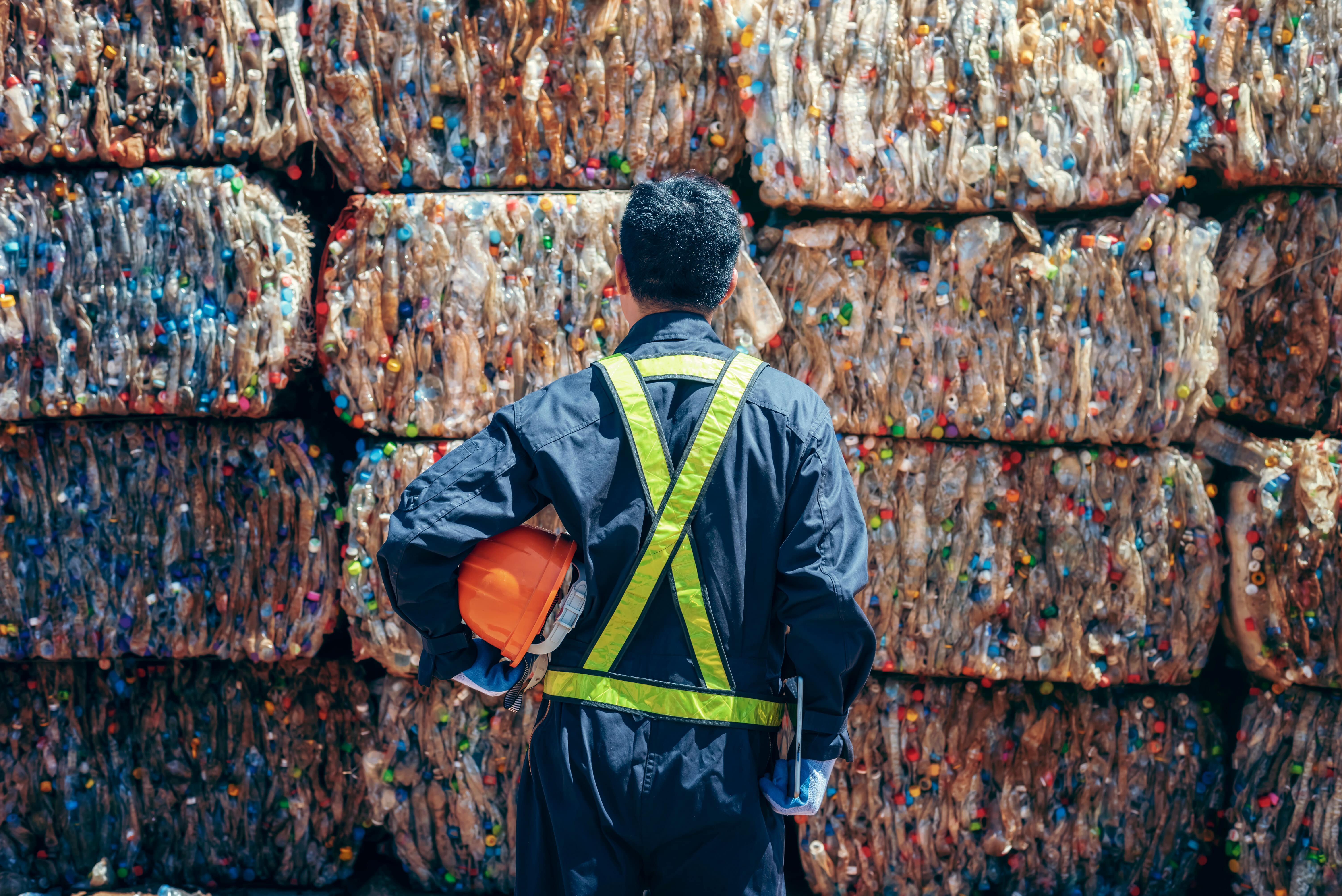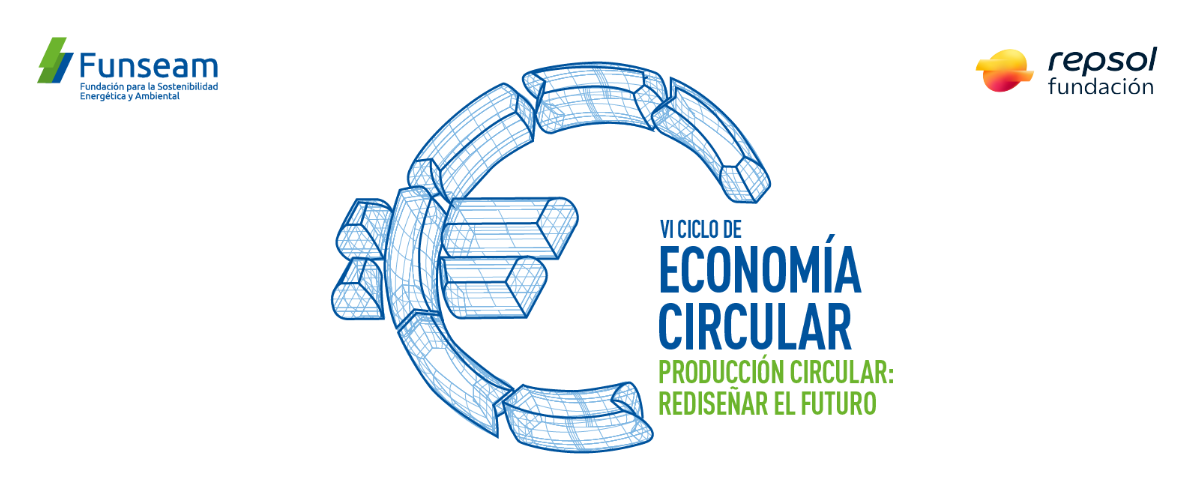Our consumption patterns generate tons of waste every day which, if not adequately managed by means of recycling treatments, end up accumulating in landfills with consequences that are not only harmful to the environment, but also to public health. Learning how to make better use of waste and efficiently use the resources we have is now more than ever an imperative need to be addressed if we want to ensure the future of the planet and its ecosystem.
In our country alone, the Spanish economy generated 105.6 million tons of waste in 2020, of which only 54.7% were destined for recycling, according to the latest data published by the INE (National Statistics Institute).
In order to address this challenge we must begin to apply, from now on, new production and consumption systems based on the circular economy and on sustainable development. Not only to reduce the generation and amount of this waste, but also taking into account all the advantages that proper management thereof can contribute to such a relevant objective at present, such as advancing the energy transition.
Waste management
The main objective is to evolve towards a zero waste model, a consumption system based on efficiency and optimization, which aims to lengthen the useful life of resources as much as possible. In this way, not only would the amount of new raw materials to be consumed by the users be reduced, but also the waste generated by increasing its period of use.
To implement this new paradigm in the economic and social environment, the circular economy is our greatest ally. It is a form of production and consumption based on the reuse and recycling of existing products, taking into account factors such as their design, environmental impact, and life cycle. This system is based on the implementation of a series of action principles known as "R".
These principles have been evolving and expanding over the years to meet current needs in this sphere. For example, in the 1970s reference was made to just 3Rs (reduce, reuse, and recycle) and it was not until 2017 when Jacqueline Cramer extended the range to 10Rs. Subsequently, Ellen MacArthur replaced one of the "Rs" for Rethinking, until giving rise to the 9R scheme we currently follow and which serves to ensure that the use that will be given to a product is the most effective possible. It should be noted that, although we currently refer to 9Rs, the truth is that technically they continue to be 10Rs, since one of the principles has been renamed as R0 and is not counted. With this particularity, the current lines of action are as follows:
Promoting waste recovery, both for energy generation and for the reuse of solid resources, is a key strategy for favoring change towards a more sustainable and conscious energy model.
- R0 Refuse. Stop using a product or replace it with another, more circular one.
- R1 Rethink. Intensify the use of the product, maximizing its value. Foster patterns of shared use between different users.
- R2 Reduce. Improve the efficiency of production processes to minimize the use of resources and raw materials.
- R3 Reuse. Foster the reuse of products between different users when it is no longer useful for one of them, maintaining their original function.
- R4 Repair. Maintenance and repair of the products for the purpose of increasing their useful life and original use.
- R5 Refurbish. Restore a product with the aim of continuing to use it.
- R6 Remanufacture. Use some parts of an obsolete product to manufacture a new product with the same original function.
- R7 Repurpose. Use some parts of an obsolete product to manufacture a new product changing the function of the original product.
- R8 Recycle. Process materials at the end of their useful life with the aim of obtaining the same or lower quality levels and reuse them to manufacture new products.
- R9 Recover. Incineration of materials with energy recovery.
Waste recovery
Waste management can also be key in the energy transition process by means of recovery. This concept refers to the process of reconverting waste to achieve a specific objective, such as generating energy or creating new raw materials. There are two basic waste recovery modalities: energy and solid materials.
1. Energy recovery
Using waste as an alternative energy source can generate significant benefits in terms of sustainability, reuse, and change in energy model.
The first thing we must know is that not all types of waste can be converted to energy. To this end, organic waste is mainly used, but there are also other materials such as plastics, which can be converted to energy applying the adequate processes.
If we focus on organic waste, it can come from industries such as food or livestock, agricultural waste, forest waste, or the urban waste we generate every day. To this biodegradable organic matter, also known as biomass, different mechanical, thermochemical, and biological techniques that cause it to decompose in a process during which energy is released. Some of the main examples of energy recovery with biomass are:
- Biogas. A type of renewable gas that can be used as energy, but also as fuel. It is produced by means of a process of anaerobic digestion by means of bacteria and other microorganisms.
- Biomethane. This gas is obtained from biogas, by means of a process called upgrading which removes some impurities from the composition, such as CO2. With this new degree of purity, the proportion of methane is greater and allows it to be incorporated into the gas network without any problems.
- Biofuels. Organic waste is also a source for the generation of biofuels. Such is the case of biodiesel, which is created from vegetable oils, animal fats, or used cooking oils, or from bioethanol, a type of alcohol obtained from different types of plants such as sugarcane, beetroot, or corn.
If we talk about the treatments that exist for this type of recoverable waste, we find that there are two main lines. First, we have heat treatments, which include incineration, pyrolysis, or gasification. Basically, these processes try to provoke a chemical reaction using high temperatures. Also, the heat obtained is normally used to generate steam, which can also serve to generate energy.
There are also biological digestion treatments based on the use of microorganisms, such as bacteria, in charge of carrying out the decomposition process by breaking down the molecules and their bonds. They may be aerobic or anaerobic processes, depending on whether or not there is oxygen present.
2. Recovery of solid materials
There is waste that can also be totally or partially recycled to give rise to new raw materials that will help us to compensate, for example, the lack of supplies of parts or elements in production chains.
Different modalities of raw materials can be obtained depending on the type of waste used:
- Electronic components. There are many renewable generation industries that depend on very specific parts to be able to operate. Solar panels, wind turbine engines, or electric vehicle batteries use raw materials in their structures that are not always that easy to obtain, as in the case of critical minerals, and their production is often hampered by this shortage. A solution to this problem is to opt for recycling solid materials and recovering this type of electronic components with the aim of extending their useful life and reconditioning them to give them a second life. Thus, dependence on procurement is reduced and it is easier to produce these renewable generation apparatuses and leverage all of their advantages for the energy transition.
- Other waste. Paper and cardboard, lightweight plastics, glass, wood, or metals are also solid waste that can be recovered to be reconverted into raw materials. All recycling processes add up in the circular economy, and it is a further step towards the objective of achieving a zero waste model.
For these types of processes, mechanical treatments are normally used, with techniques for cutting up the material and then introducing it into an extruder for producing recycled pellets, as in the case of lightweight plastic containers. The mechanical treatments also include the waste selection and classification process, which can be manual or automated, in addition to the pressing or packaging of the materials for the subsequent recycling thereof. Also worth mentioning in this section are electrochemical treatments, which are used to recover metals.
Non-recoverable waste
In many cases, it is not feasible to recycle certain types of waste. Either because there is no adequate process for it, it is not safe, or because it is not profitable enough. Such is the case, for example, with radioactive or corrosive waste, such as sulfuric acid or toxic waste.
In such cases where recycling is not possible, the adequate end of their life cycle must be guaranteed by maintaining them in safe places, both for people and for the environment, and minimizing their impact. Their production and consumption would also have to be reduced to avoid generating more.
The role of society
Public awareness plays an essential role in adopting the circular economy and converting waste into raw materials. Companies, households, and public entities must participate in this process of change in waste management and, above all, do their part to reduce the consumption of natural resources.
In the specific case of our country, the Circular Economy PERTE (Strategic Projects for Economic Recovery and Transformation) plan has been implemented, a strategic project aimed at accelerating the transition to a more efficient and sustainable production system in the use of raw materials and the reduction of the ecological footprint. The program includes grants amounting to 492 million euros and resources in excess of 1.2 billion euros are expected to be mobilized by 2026.


.jpeg)

